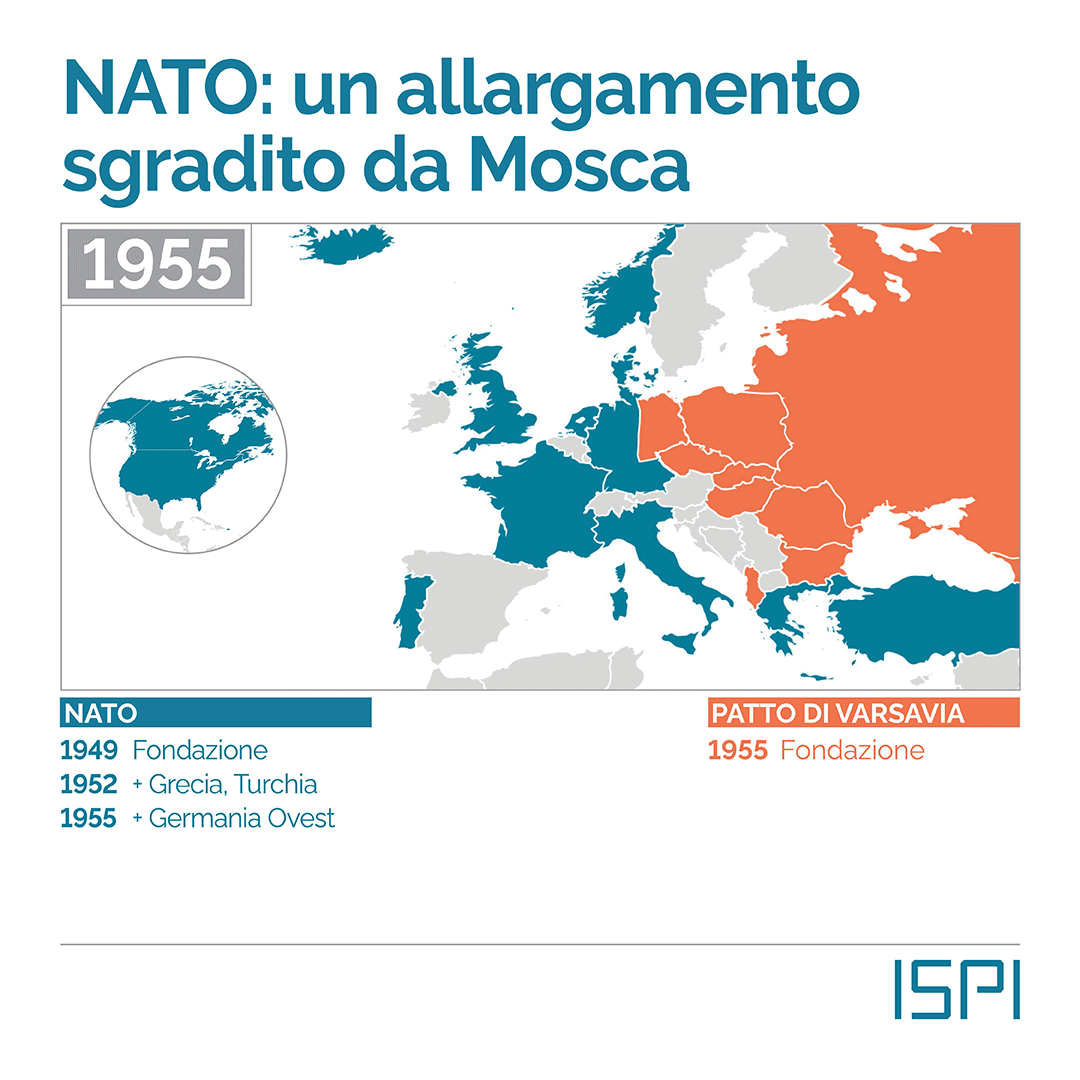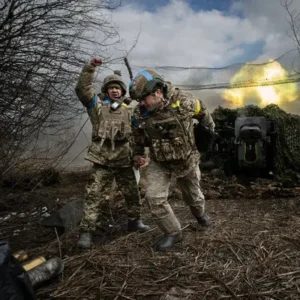
The invasion and the developments of the war

One year into Russia’s war of aggression in Ukraine, fighting for control of the Donetsk region intensified. In particular, the clashes between the Ukrainian and Russian armies continue (the latter also supported by mercenaries from the Wagner group ) in the territories surrounding Bakhmut in eastern Ukraine. After the Russian captures of the cities of Severodonetsk and Lysychansk this summer, Bakhmut’s capture would represent another significant victory for Moscow. More than for its strategic value, the conquest of the city would be important because it would restore strength to the attempt by the Russian army to take full control over the two breakaway republics of Donetsk and Luhansk by the spring. Furthermore, the battle for Bakhmut has been fought since last May: what has become exhausting battles of attrition have therefore acquired a symbolic value. “Bakhmut resists” has become one of the battle cries of Ukrainian citizens.
As mentioned above, from a strategic point of view, the capture of Bakhmut is of little relevance. While certainly detrimental to Ukraine, for which any cession of territory to the Russian enemy is a significant blow, the impact on the outcome of the war would be minimal. Even if the Russians could penetrate deeper into the Donetsk region after defeating the city, they would face other equally fortified Ukrainian defence lines. Even in the event of a Russian victory in the battle for Bakhmut, the only sure outcome would be just more months of backbreaking fighting.
Meanwhile, the support provided by Western governments to Kyiv continues. On 13 December, after the Conference on Ukraine organized in Paris and attended by 47 countries and numerous international organizations, it was announced that almost one billion euros – raised through donations – would be given to Kyiv to help the Ukrainian population survive the war. Furthermore, on December 9, the US State Department approved a further aid package (the 27th since August 2021) worth 275 million dollars (about 260 million euros) to support the Ukrainian war apparatus. The European Union, on the other hand, is ready18 million euros to be sent as aid to Ukraine in 2023 and is preparing to approve the tenth package of sanctions against Russia.
Almost a year after the conflict began, Ukraine seems increasingly in a war of attrition. Although the shortage of supplies and ammunition is decisively hampering the advance of Russian forces, Putin shows no signs of wanting to compromise with Zelensky to conclude a peace agreement or at least an armistice.
But how did it get to this point? To understand this, you have to go back a few months.

At dawn on February 24, 2022, Russian President Vladimir Putin ordered to invade neighbouring Ukraine. The decision came shortly after the recognition of the separatist republics of Donbas located in Ukrainian territory, Donetsk and Lugansk, and the sending of troops with the official motivation of a peacekeeping initiative. The conflict has now been going on for more than a year.
However, the crisis between Russia and Ukraine did not erupt suddenly. The contrast has been openly going on for eight years: since, in 2014, after the Euromaidan Revolution, which culminated in the ouster of then President Yanukovyč, Moscow invaded and annexed the Crimean peninsula and supported separatist movements in the Donbas region in Ukraine Oriental. After Russia went on the attack, Europe and the United States didn’t stand idly by. Ukraine is located on the eastern borders of the European Union and NATO (of which Russia fears further enlargement to the East) and is a crucial crossing point for the supply of Russian gas. How did the Russian-Ukrainian crisis originate? What are Moscow’s goals? Ten maps that help to understand the crisis.

It was immediately apparent that the Russian offensive was not an attack limited to securing Moscow’s control over the disputed regions of eastern Ukraine. Although the Kremlin’s plans were classified, statements by Putin, his spokesman Dimitri Peskov and Foreign Minister Sergei Lavrov implied that the ultimate goal was to bring Ukraine into the Russian sphere of influence in the form of a puppet state – sovereign and independent only on paper. However, the number of troops deployed on the ground and the costs that military occupation would have imposed economically and materialistically led analysts to rule out the hypothesis that such an objective could be achieved with a military occupation of the entire Ukrainian territory.
According to Ukrainian intelligence sources, the strategy of the Russian president at the beginning of the invasion was to force the government of Volodymyr Zelensky to surrender. Instead, the most accredited hypothesis for the long run has always been that Putin and his generals intended to maintain control of eastern Ukraine: the part east of the Dnieper River. “The objective – intelligence sources explained to the newspaper Ukrainska Pravda – could be to divide Ukraine into east and west, along the Dnieper, as Germany once was”. By doing so, Moscow could have established a ‘buffer’ zone between Russia and Western countries, helpful in guaranteeing its security.
In the map above, the routes of entry into Ukraine of Russian troops from the South, East and North towards Kyiv.

On Friday, September 30, in the Kremlin’s St. George’s Hall, Vladimir Putin signed the protocol of annexing the Ukrainian territories of Donetsk, Luhansk, Zaporizhzhia and Kherson. On October 3, the Duma then ratified the document. The passage of the regions to Russia takes place after sham referendums have been held, the sole purpose of which was to justify a move that would otherwise be too rash and utterly disrespectful of international law – as well as the sovereignty of an independent state – even for the regime of Putin.
“From today, there are four more Russian regions”, announced Putin in a long speech delivered from the same hall where eight years earlier, in 2014, he had proclaimed the passage of Crimea from Ukraine to Russia. According to Putin, the referendums held in the four territories clearly indicate the desire for self-determination of the local populations.
More than 15 per cent of Ukraine’s total land area thus passes to Russia, but the West stands united in condemning the move. “All the territories illegally occupied by the Russian invaders are Ukrainian land and will always be part of this sovereign nation” with these words, the president of the European Commission, Ursula von der Leyen, commented on the annexation of Donetsk, Luhansk Kherson and Zaporizhzhia. For its part, Kyiv has promised to liberate the occupied regions, and in the meantime, Zelensky has asked for membership in NATO.

We need to take a step back to understand the origins of the crisis. After the fall of the Soviet Union, like other countries in the Russian neighbourhood, Ukraine also gained independence. By many, the country is considered the “cradle” of modern Russian culture. From the 9th century AD, Ukraine was the nucleus of Kievan Rus’, a medieval monarchical state extending from Belarus and Russia. From 1923 to 1991, Ukraine was then one of the Republics of the former Soviet Union, fulfilling the fundamental role of the ” breadbasket of the USSR ” thanks to the large extension of arable land.
Following independence, the relationship between Moscow and Kyiv has become troubled and volatile due to the alternation between pro-Russian governments and others closer to the West (albeit within the framework of a multi-vector policy aimed at exploiting the rivalry between the two sides). The two most recent examples of pro-Western governments are those of Viktor Yushchenko, born after the “Orange Revolution” of late 2004, and the current one led by Volodymyr Zelensky.

Since the dissolution of the USSR in 1991, Ukrainian political life has been marked by an intermediate position between the European Union and Russia and by regional divisions, particularly between the western and eastern parts, in which a high percentage of the population ( according to last census conducted in 2001, over 50% in Crimea and Donbas) identify as native Russian speakers. After tumultuous months of political debates and popular protests, Russia annexed the Ukrainian peninsula of Crimea in 2014.
In the same year, a line of conflict opened up in the eastern region of Donbas, which saw pro-Russian separatists clash with the regular army. The separatists controlled parts of the territory and proclaimed the birth of the People’s Republics of Lugansk and Donetsk. On February 24, 2022, Putin exploited the existence of the two Republics (disputed and not recognized by the international community) to announce the entry of Moscow’s troops into Ukraine and proceed with the invasion, then justifying it as a “peacekeeping “ operation.

The UN refugee agency estimates that as of September 30, there would be more than 7 million Ukrainians fleeing the country and heading mainly to Poland and other neighbouring countries. These are mainly women, children and the elderly. Most men of military age between 18 and 60 complied with the ban imposed by President Zelensky, who urged them to stay and fight. Unlike what happened in the past with refugees from the Middle East, the flight of Ukrainian civilians has triggered a contest of solidarity. Poland, Romania, and Hungary have opened their borders and allowed entry “to all those who want to enter,” even if they do not have documents and vaccination certificates. At the same time, the European interior ministers have approved a quota system for redistribution, the recognition of Ukraine’s status as a country at risk, facilitations for expatriation procedures and another allocation to deal with the emergency.

Ukraine’s position between the European Union and Russia means that the conflict has values far beyond the worsening of the country’s internal divisions. In recent years, Ukraine has received military support from the Western Front ($2.7 billion aid received from the US since 2014), rekindling Russian concerns about its further rapprochement with NATO. Since the collapse of the USSR, the Atlantic Alliance has expanded to include countries that Russia has historically considered part of its orbit – a development that the Kremlin sees as a security and symbolic threat. For this reason, Putin has always demanded guarantees about NATO’s actions in the region, including the prohibition of further enlargements and the withdrawal of forces from the countries that joined the Alliance after 1997 (a bloc that includes a large part of Eastern Europe: from the Baltic countries to the Balkans).
Since the first days of the invasion, there has been talk of a possible entry of Ukraine into the Atlantic Alliance. However, the member countries have never welcomed this scenario with enthusiasm. Indeed, there are fears of the consequences that such an enlargement would have on the application of Article 5, which provides for the intervention of NATO in the event of aggression against one of the allies. Therefore, accepting Ukraine in the Atlantic Assembly could trigger an open war between Russia and the West.
However, the picture became more complicated following Zelensky’s announcement that he had presented a formal request to join the Alliance. In doing so, the Ukrainian president hopes to avert an escalation of the conflict and face the Russian threat to deploy atomic bombs. In response, secretary general Jan Stoltenberg reiterated his full support for Ukraine. Still, about the possibility of opening the doors of NATO, he underlined that the decision rests with the member countries, which for now, however, have shown themselves to be cautious and sceptical about the request.

During the offensive, the growing Russian deployment of forces has made Ukraine an exposed target on several sides: north, east and south towards Crimea. Massive exposure for Ukrainian defences, he adds, a missile deployment by Russia capable of covering 95% of the Ukrainian territory. In addition, Russia has between 170,000 and 190,000 ground forces from all over the country: from the southern military districts, from the northern military districts in the Baltic Sea, and even from those in the Russian Far East, including Siberia. To these is added a force of (at least) 35-40 thousand units present in the Donbas composed of separatists, mercenaries and Russian citizens. Pressure on Ukraine is also exerted along its northern border due to the involvement of Belarusian units in military exercises with the Russian ground forces.
At the end of September, Putin then announced partial mobilization and called up 300,000 reservists to integrate the Russian forces in difficulty on the hot fronts in Ukraine. However, the recent statements by Andrey Gurulev – former deputy commander of the Russian army – cast shadows on Moscow’s practical ability to mobilize reservists.

In the aftermath of the Russian invasion, around 36% of the gas imported by the EU (50% if we consider only extra-European imports) came from Moscow. Italy was the European country that made the most use of natural gas: 42.5% of the energy mix. Almost as much as the sum of the respective shares in Germany (26%) and France (17%). But cousins across the Alps can count on nuclear power, which satisfies almost two-thirds of France’s electricity needs. While Germany is more virtuous in renewables but compared to us, it also makes much more use of coal.
Over the years, the EU has actively sought to diversify its gas supply sources, particularly by focusing on liquefied natural gas (LNG). This is already after 2009 and 2010 when Russia first turned off the taps to Ukraine and part of the Union for the first time. But the “dependence” on Moscow is a structural and geographical fact: it is much easier and cheaper to transport gas by pipe, and a vast producer not far from the big European consumers is an inevitable partner. For this reason, despite the intentions on paper to diversify supplies, the drop in production in Norway, the production problems in Algeria and the instability in Libya have, on the contrary, increased European dependence on Moscow over the past 10 years.

More than seven months after the conflict outbreak, Russian gas flows to Europe have collapsed by 73%. Moscow’s retaliation for the support provided by the West to Ukraine has in fact gone through the reduction – and in some cases suspension – of gas supplies, with a consequent increase in prices on energy markets around the world. At the European level, there is still a lack of a common strategy to deal with this drastic reduction and the increase in the prices of fossil fuels. Western countries are moving independently in search of new partners, each trying to secure their gas reserves to face the winter. For its part, Italy has turned to Norway and Algeria, although liquefied natural gas (LNG) is helping to withstand the blow, primarily that of the US and Qatari origin.



